#indigenous theory
Explore tagged Tumblr posts
Text
The Iron Wall - Vladimir Ze'ev Jabotisnky 1923 foundational Zionist text translated from Russian
#decolonisation#colonization#decolonization#antizionism#zionistterror#islamophobia#free palestine#indigenous#indigenous theory
1 note
·
View note
Text
youtube
Native Media Theory's video on an Indigenous Perspective of Avatar is SO GOOD and you should really take the time to watch it. Always prioritize Indigenous perspectives of films about and/or inspired by Indigenous people
266 notes
·
View notes
Note

Honestly maybe I should stop lurking on reddit

Bonus dumbassery from OP:

You know this is just reddit atheism until it goes full khazar theory
#anti theism#jews are indigenous to israel#antisemitism#leftist antisemitism#leftist brainrot#leftist hypocrisy#blocklist#antisemitic conspiracy theories
96 notes
·
View notes
Text
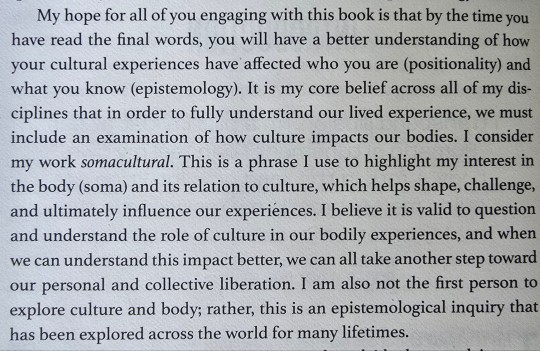
Somacultural liberation is a somatic, cultural, intellectual, emotional, and existential modality. The somatic invites us into proprioceptive and interceptive awareness, recognizing the way our body moved through spaces externally (proprioception) and internally (interception) and how our body is shaped by cultural experiences.
-Somacultural Liberation An Indigenous, Two Spirit Somatic Guide to Integrating Cultural Experiences Toward Freedom by Roger Kuhn
#ndn#two spirit#queer#indigequeer#indigiqueer#indigenous#native american#transgender#indigenous queer theory#queer feminism#intersectional feminism#trans feminism#nonbinary#2 spirit#2slgbtqia+#2slgbt#lgbt#pride#pride month#native voices#indigenous voices#Somacultural Liberation An Indigenous Two Spirit Somatic Guide to Integrating Cultural Experiences Toward Freedom by Roger Kuhn#Somacultural#somacultural liberation#queer liberation#two spirit liberation#queer quotes#native quotes#indigenous quotes#indigenous books
35 notes
·
View notes
Text

the true detective reddit is primarily full of haters but this post did make me laugh
#i was browsing the theories and unfortunately there's a lot of posts like 'wahhh this show is woke now and i hate it'#which is bizarre because wasn't mahershala ali the lead last season…why weren't they mad about that??#anyway#what i really would like to find is some reviews/analyses by indigenous fans but i haven't found that yet#true detective night country#lulu speaks#lulu watches things#lulu watches true detective night country
214 notes
·
View notes
Text
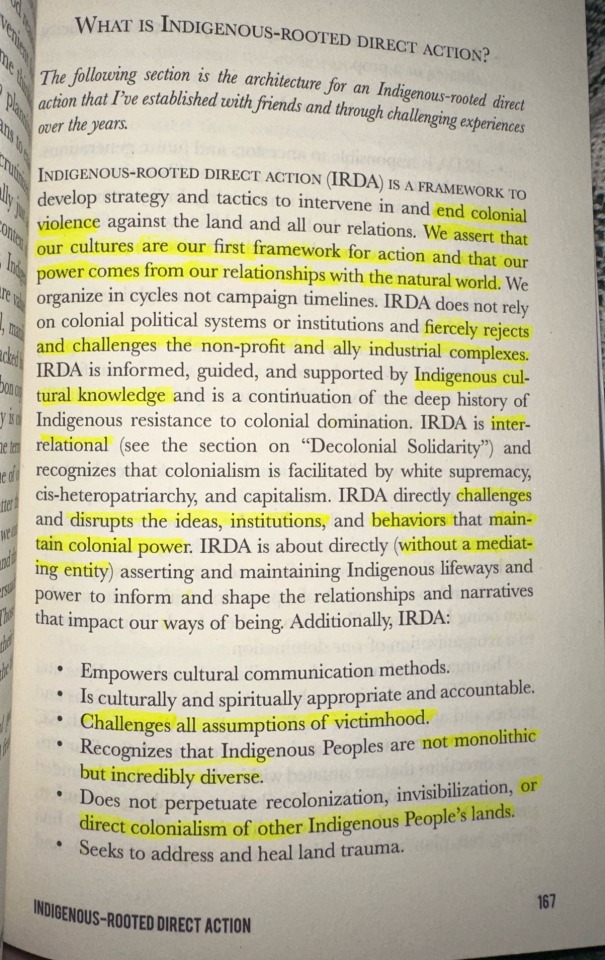
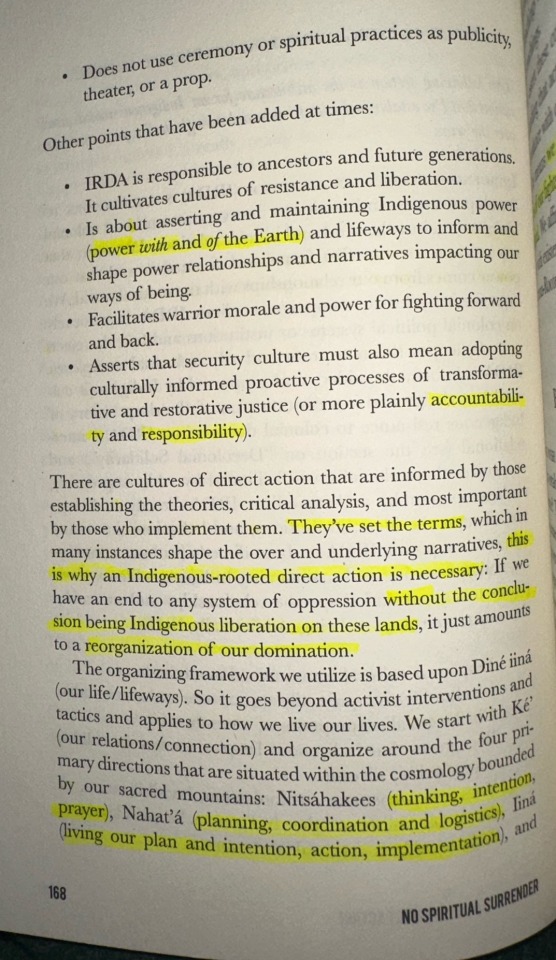
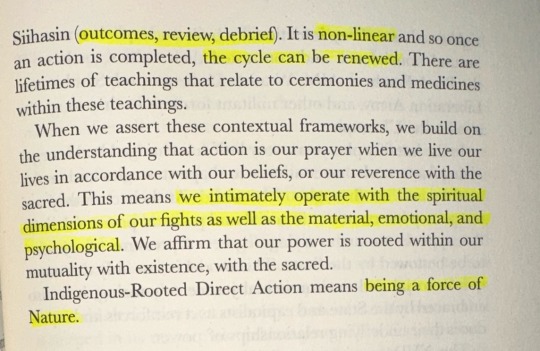
Excerpt of ‘What Is Indigenous-Rooted Direct Action?’ from Klee Benally’s “No Spiritual Surrender”
#Klee Benally#Diné#indigenous resistance#indigenous direct action#direct action#indigenous lifeways#indigenous action#decolonial land back#decolonization#decolonial theory#land back#indigenous land back
40 notes
·
View notes
Text
Again not me saying any native person being put off communist thought is wrong, it’s on the onus of the communists to build a program that people want to join, not the other way around. It’s a failing of the movement, not natives. I’m certainly not about to demand anyone subscribe to my own political system just because I believe in it.
#and yeah it goes absolutely without saying that the general political foundation of your average western commie#is embarrassingly lacking in indigenous politics separate from communist theory#to which I say this can be fixed! open veins of Latin America black skin white masks orientalism these are great places to start#on building your working knowledge of indigenous thought and political activism/work
14 notes
·
View notes
Text
At first, I thought that my difficulties in life were caused by the fact that I was Indigenous. Then, in my thirties, I dis- overed that in truth, it was because I am a woman. It took a long time before I could become a woman, I mean, an Indigenous woman. Being an Indigenous woman is twice as difficult, because you embody two converging political realities. Women are also considered a "minority" in a way, and our struggle is motivated by the need for personal and collective security. So I became a feminist. Because no one is born a feminist, you must choose to become one.
~ Véronique Hébert, Anarcho-Indigenism
#anarchist#anarchism#indigenous#postcolonial#postcolonial theory#postcolonialist#postcolonialism#feminist#feminism#original
26 notes
·
View notes
Text
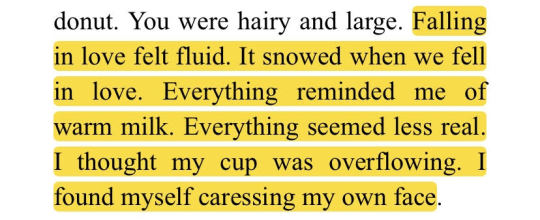
Text ID: “Falling in love felt fluid. It snowed when we fell in love. Everything reminded me of warm milk. Everything seemed less real. I thought my cup was overflowing. I found myself caressing my own face”
Excerpt From: Terese Marie Mailhot. “Heart Berries.”
#literature blog#poetry#literature#poetry blog#academia#light academia#feminist theory#heart berries#terese marie mailhot#indigenous authors#indigenous#indigenous peoples#first nations#native american#female authors#female poets#poem#literature quotes#quote#literary quote#falling in love#my collection#topic: falling in love#falling in love quote#falling in love quotes#dark academia#romantic academia#dark acadamia aesthetic
43 notes
·
View notes
Text
"In these circumstances, the commercial economy of the fur trade soon yielded to industrial economies focused on mining, forestry, and fishing. The first industrial mining (for coal) began on Vancouver Island in the early 1850s, the first sizeable industrial sawmill opened a few years later, and fish canning began on the Fraser River in 1870. From these beginnings, industrial economies reached into the interstices of British Columbia, establishing work camps close to the resource, and processing centers (canneries, sawmills, concentrating mills) at points of intersection of external and local transportation systems. As the years went by, these transportation systems expanded, bringing ever more land (resources) within reach of industrial capital. Each of these developments was a local instance of David Harvey's general point that the pace of time-space compressions after 1850 accelerated capital's "massive, long-term investment in the conquest of space" (Harvey 1989, 264) and its commodifications of nature. The very soil, Marx said in another context, was becoming "part and parcel of capital" (1967, pt. 8, ch. 27).
As Marx and, subsequently, others have noted, the spatial energy of capitalism works to deterritorialize people (that is, to detach them from prior bonds between people and place) and to reterritorialize them in relation to the requirements of capital (that is, to land conceived as resources and freed from the constraints of custom and to labor detached from land). For Marx the
wholesale expropriation of the agricultural population from the soil... created for the town industries the necessary supply of a 'free' and outlawed proletariat (1967, pt. 8, ch. 27).
For Gilles Deleuze and Felix Guattari (1977) - drawing on insights from psychoanalysis - capitalism may be thought of as a desiring machine, as a sort of territorial writing machine that functions to inscribe "the flows of desire upon the surface or body of the earth" (Thomas 1994, 171-72). In Henri Lefebvre's terms, it produces space in the image of its own relations of production (1991; Smith 1990, 90). For David Harvey it entails the "restless formation and reformation of geographical landscapes," and postpones the effects of its inherent contradictions by the conquest of space-capitalism's "spatial fix" (1982, ch. 13; 1985, 150, 156). In detail, positions differ; in general, it can hardly be doubted that in British Columbia industrial capitalism introduced new relationships between people and with land and that at the interface of the native and the nonnative, these relationships created total misunderstandings and powerful new axes of power that quickly detached native people from former lands. When a Tlingit chief was asked by a reserve commissioner about the work he did, he replied
I don't know how to work at anything. My father, grandfather, and uncle just taught me how to live, and I have always done what they told me-we learned this from our fathers and grandfathers and our uncles how to do the things among ourselves and we teach our children in the same way.
Two different worlds were facing each other, and one of them was fashioning very deliberate plans for the reallocation of land and the reordering of social relations. In 1875 the premier of British Columbia argued that the way to civilize native people was to bring them into the industrial workplace, there to learn the habits of thrift, time discipline, and materialism. Schools were secondary. The workplace was held to be the crucible of cultural change and, as such, the locus of what the premier depicted as a politics of altruism intended to bring native people up to the point where they could enter society as full, participating citizens. To draw them into the workplace, they had to be separated from land. Hence, in the premier's scheme of things, the small reserve, a space that could not yield a livelihood and would eject native labor toward the industrial workplace and, hence, toward civilization. Marx would have had no illusions about what was going on: native lives, he would have said, were being detached from their own means of production (from the land and the use value of their own labor on it) and were being transformed into free (unencumbered) wage laborers dependent on the social relations of capital. The social means of production and of subsistence were being converted into capital. Capital was benefiting doubly, acquiring access to land freed by small reserves and to cheap labor detached from land.
The reorientation of land and labor away from older customary uses had happened many times before, not only in earlier settler societies, but also in the British Isles and, somewhat later, in continental Europe. There, the centuries-long struggles over enclosure had been waged between many ordinary folk who sought to protect customary use rights to land and landlords who wanted to replace custom with private property rights and market economies. In the western highlands, tenants without formal contracts (the great majority) could be evicted "at will." Their former lands came to be managed by a few sheep farmers; their intricate local land uses were replaced by sheep pasture (Hunter 1976; Hornsby 1992, ch. 2). In Windsor Forest, a practical vernacular economy that had used the forest in innumerable local ways was slowly eaten away as the law increasingly favored notions of absolute property ownership, backed them up with hangings, and left less and less space for what E.P. Thompson calls "the messy complexities of coincident use-right" (1975, 241). Such developments were approximately reproduced in British Columbia, as a regime of exclusive property rights overrode a fisher-hunter-gatherer version of, in historian Jeanette Neeson's phrase, an "economy of multiple occupations" (1984, 138; Huitema, Osborne, and Ripmeester 2002). Even the rhetoric of dispossession - about lazy, filthy, improvident people who did not know how to use land properly - often sounded remarkably similar in locations thousands of miles apart (Pratt 1992, ch. 7). There was this difference: The argument against custom, multiple occupations, and the constraints of life worlds on the rights of property and the free play of the market became, in British Columbia, not an argument between different economies and classes (as it had been in Britain) but the more polarized, and characteristically racialized juxtaposition of civilization and savagery...
Moreover, in British Columbia, capital was far more attracted to the opportunities of native land than to the surplus value of native labor. In the early years, when labor was scarce, it sought native workers, but in the longer run, with its labor needs supplied otherwise (by Chinese workers contracted through labor brokers, by itinerant white loggers or miners), it was far more interested in unfettered access to resources. A bonanza of new resources awaited capital, and if native people who had always lived amid these resources could not be shipped away, they could be-indeed, had to be-detached from them. Their labor was useful for a time, but land in the form of fish, forests, and minerals was the prize, one not to be cluttered with native-use rights. From the perspective of capital, therefore, native people had to be dispossessed of their land. Otherwise, nature could hardly be developed. An industrial primary resource economy could hardly function.
In settler colonies, as Marx knew, the availability of agricultural land could turn wage laborers back into independent producers who worked for themselves instead of for capital (they vanished, Marx said, "from the labor market, but not into the workhouse") (1967, pt. 8, ch. 33). As such, they were unavailable to capital, and resisted its incursions, the source, Marx thought, of the prosperity and vitality of colonial societies. In British Columbia, where agricultural land was severely limited, many settlers were closely implicated with capital, although the objectives of the two were different and frequently antagonistic. Without the ready alternative of pioneer farming, many of them were wage laborers dependent on employment in the industrial labor market, yet often contending with capital in bitter strikes. Some of them sought to become capitalists. In M. A. Grainger's Woodsmen of the West, a short, vivid novel set in early modern British Columbia, the central character, Carter, wrestles with this opportunity. Carter had grown up on a rock farm in Nova Scotia, worked at various jobs across the continent, and fetched up in British Columbia at a time when, for a nominal fee, the government leased standing timber to small operators. He acquired a lease in a remote fjord and there, with a few men under towering glaciers at the edge of the world economy, attacked the forest. His chances were slight, but the land was his opportunity, his labor his means, and he threw himself at the forest with the intensity of Captain Ahab in pursuit of the white whale. There were many Carters.
But other immigrants did become something like Marx's independent producers. They had found a little land on the basis of which they hoped to get by, avoid the work relations of industrial capitalism, and leave their progeny more than they had known themselves. Their stories are poignant. A Czech peasant family, forced from home for want of land, finding its way to one of the coaltowns of southeastern British Columbia, and then, having accumulated a little cash from mining, homesteading in the province's arid interior. The homestead would consume a family's work while yielding a living of sorts from intermittent sales from a dry wheat farm and a large measure of domestic self-sufficiency-a farm just sustaining a family, providing a toe-hold in a new society, and a site of adaptation to it. Or, a young woman from a brick, working-class street in Derby, England, coming to British Columbia during the depression years before World War I, finding work up the coast in a railway hotel in Prince Rupert, quitting with five dollars to her name after a manager's amorous advances, traveling east as far as five dollars would take her on the second train out of Prince Rupert, working in a small frontier hotel, and eventually marrying a French Canadian farmer. There, in a northern British Columbian valley, in a context unlike any she could have imagined as a girl, she would raise a family and become a stalwart of a diverse local society in which no one was particularly well off. Such stories are at the heart of settler colonialism (Harris 1997, ch. 8).
The lives reflected in these stories, like the productions of capital, were sustained by land. Older regimes of custom had been broken, in most cases by enclosures or other displacements in the homeland several generations before emigration. Many settlers became property owners, holders of land in fee simple, beneficiaries of a landed opportunity that, previously, had been unobtainable. But use values had not given way entirely to exchange values, nor was labor entirely detached from land. Indeed, for all the work associated with it, the pioneer farm offered a temporary haven from capital. The family would be relatively autonomous (it would exploit itself). There would be no outside boss. Cultural assumptions about land as a source of security and family-centered independence; assumptions rooted in centuries of lives lived elsewhere seemed to have found a place of fulfillment. Often this was an illusion - the valleys of British Columbia are strewn with failed pioneer farms - but even illusions drew immigrants and occupied them with the land.
In short, and in a great variety of ways, British Columbia offered modest opportunities to ordinary people of limited means, opportunities that depended, directly or indirectly, on access to land. The wage laborer in the resource camp, as much as the pioneer farmer, depended on such access, as, indirectly, did the shopkeeper who relied on their custom.
In this respect, the interests of capital and settlers converged. For both, land was the opportunity at hand, an opportunity that gave settler colonialism its energy. Measured in relation to this opportunity, native people were superfluous. Worse, they were in the way, and, by one means or another, had to be removed. Patrick Wolfe is entirely correct in saying that "settler societies were (are) premised on the elimination of native societies," which, by occupying land of their ancestors, had got in the way (1999, 2). If, here and there, their labor was useful for a time, capital and settlers usually acquired labor by other means, and in so doing, facilitated the uninhibited construction of native people as redundant and expendable. In 1840 in Oxford, Herman Merivale, then a professor of political economy and later a permanent undersecretary at the Colonial Office, had concluded as much. He thought that the interests of settlers and native people were fundamentally opposed, and that if left to their own devices, settlers would launch wars of extermination. He knew what had been going on in some colonies - "wretched details of ferocity and treachery" - and considered that what he called the amalgamation (essentially, assimilation through acculturation and miscegenation) of native people into settler society to be the only possible solution (1928, lecture xviii). Merivale's motives were partly altruistic, yet assimilation as colonial practice was another means of eliminating "native" as a social category, as well as any land rights attached to it as, everywhere, settler colonialism would tend to do.
These different elements of what might be termed the foundational complex of settler colonial power were mutually reinforcing. When, in 1859, a first large sawmill was contemplated on the west coast of Vancouver Island, its manager purchased the land from the Crown and then, arriving at the intended mill site, dispersed its native inhabitants at the point of a cannon (Sproat 1868). He then worried somewhat about the proprieties of his actions, and talked with the chief, trying to convince him that, through contact with whites, his people would be civilized and improved. The chief would have none of it, but could stop neither the loggers nor the mill. The manager and his men had debated the issue of rights, concluding (in an approximation of Locke) that the chief and his people did not occupy the land in any civilized sense, that it lay in waste for want of labor, and that if labor were not brought to such land, then the worldwide progress of colonialism, which was "changing the whole surface of the earth," would come to a halt. Moreover, and whatever the rights or wrongs, they assumed, with unabashed self-interest, that colonists would keep what they had got: "this, without discussion, we on the west coast of Vancouver Island were all prepared to do." Capital was establishing itself at the edge of a forest within reach of the world economy, and, in so doing, was employing state sanctioned property rights, physical power, and cultural discourse in the service of interest."
- Cole Harris, “How Did Colonialism Dispossess? Comments from an Edge of Empire,” Annals of the Association of American Geographers, Vol. 94, No. 1 (Mar., 2004), p. 172-174.
#settler colonialism#settler colonialism in canada#dispossession#violence of settler colonialism#land theft#canadian history#indigenous people#first nations#reading 2024#cole harris#history of british columbia#reservation system#resource extraction#british empire#canada in the british empire#homesteading#marxist theory#capitalism#capitalism in canada#immigration to canada
24 notes
·
View notes
Text
"Under the Bush Administration, Secretary of State James Baker introduced the "land for peace" formula by which Israel would give up the 1967 occupied territories in exchange for a peace treaty with the Palestinians and neighboring Arab countries. With this aim in mind, the Bush Administration conditioned the soft loans given to Israel, stating that the funds were not to be used for settlement expansion. According to this rationale, peace could be achieved through political compromise that required an end to the expansion of the Jewish settler colonial project. The Madrid Conference paved the way for secret negotiations between the Palestine Liberation Organization (PLO) and the Israeli government. PLO Chairman Yasser Arafat and Israeli Foreign Minister Shimon Peres signed the Oslo Accords on the lawn of the White House on September 9, 1993
As part of the accords, the PLO recognized the State of Israel in exchange for Israel recognizing the PLO as the representative of the Palestinian people. For the PLO, weakened and isolated as a result of the collapse of the Soviet Union and the US invasion of Iraq, the accords were a rescue rope that allowed the leadership to resettle in the West Bank and Gaza. However, just as the African National Congress in South Africa negotiated with the de Klerk government to end Apartheid and give Black South Africans political rights without dismantling the structure of the settler colonial project, leaving the majority of Black South Africans to continue to live in Bantustans without access to economic power, the Oslo Accords gave the PLO the right to interim Palestinian self-rule in limited areas of the West Bank and the Gaza Strip, with the hope of a permanent solution within five years, without changing the structure of the Jewish settler colonial project. Postponing issues related to Jerusalem, settlements, borders, water, and refugees indicated that Israel was not ready or able to end its settler colonial project.
For Native Americans in the United States, treaties were violated and often used to buy time to further the settler colonial project. This was the case in Palestine, where the State of Israel used the pretext of negotiations to preempt the outcome, enhancing its settler colonial project in the West Bank, including East Jerusalem...East Jerusalem has been Judaized, the resources of the West Bank are exploited for the settler community, and no refugees have been allowed to return. Throughout this stage, Israel has continued to act as a de facto settler colonial state with the Palestinian government nothing more than a subcontractor for this state."
- Mitri Raheb, "Settler Colonialism, Palestine, and the Bible," Decolonizing Palestine (2023), 15-17
#palestine#free palestine#palestinian genocide#settler colonialism#decolonizing palestine#decolonization#decolonial theory#postcolonialism#apartheid#ethnic cleansing#one state solution#indigenous#reading
7 notes
·
View notes
Note
Just saw a lovely post about Māori people and how someone is in fact Māori regardless of their skin color (skin color does not equal indigenous status) and how DNA testing to prove if you're "indigenous enough" is blood quantum bs (which it is).
Someone mentions in the comments about how Jews are indigenous to Judea, you know a proven fact that does not indicate how someone feels about the current conflict or anything other than the fact that Jewish people are indeed indigenous to their homeland. Immediately people are like "that's Zionist bullshit" (with 3K likes on that comment) and I've also now seen the stupidest argument I've ever seen.

It's bad enough to see people tell Jews to go back to Poland. Now it's "Jews don't exist, it's just Ashkenazi, Sephardic, Mizrachi, etc they're all native to Europe, Middle East, North Africa" (so basically the areas they ended up after getting kicked out of their homeland).

Why are we denying history and facts now? This doesn't serve any purpose other than to fuck over Jewish people.

Sheer level of ignorance.
If I ever hit this level of goysplaining* (or really any level of incorrectly talking about Jewish history, culture, tradition, etc) please call me out (hit me over the head) because fuckin' hell.
*(goysplaining is the term right? The equivalent of mansplaining but for non-Jews about Jewish things)
if we’re native there why do the locals want to send us to Israel?
This is Khazar theory with extra steps
#jews are indigenous to israel#antisemitism#leftist antisemitism#leftist brainrot#leftist hypocrisy#Antisemitic conspiracy theories
29 notes
·
View notes
Text











Source
#khazar theory#debunking the khazar theory#affirming jewish identity through law#ashkanazi jews#blood purity test#indigenous people#palestinians
22 notes
·
View notes
Text

The way some modern American leftists use words is just like throwing spaghetti at a wall at this point
#I think a lot of indigenous and decolonial theory is an important discipline that has been undercut#By its own adherents refusing to take it seriously and just. Choosing words to make it an all encompassing theory of Everythign for their#Personal worldview
28 notes
·
View notes
Note
I am so glad you articulated the criticism of Dany crucifying the slavers as a political folly and not a moral folly like listen I am a Dany fan if I could send asks from my sideblog you would know this but I do not believe we are supposed to just brush off the crucifixion like Dany herself isn’t even fully convinced it was the right thing to do. Remembering it she feels sick and has to shut down her doubts and TELL HERSELF it was right. She is an interesting character to me because she can’t stand the compromises she must make to maintain peace AND YET she does want justice and liberation BUT she also hates the suffering and bloodshed of war AND YET she is quick to command violence on impulse. I do think her peace in Meereen was real (big Meereen Knot Essays believer) but all of her internal conflicts lead her to her mistakes. Can’t stand peace but can’t stand war so she just tears herself apart!! It’s tragic! It’s interesting! So much more interesting than an unambiguously heroic Dany who makes no mistakes ever!
Yeah, like....it's certainly morally messy, and I think it's morally more messy because Dany isn't a slave of the Ghiscari like Missandei or an Unsullied like Grey Worm, Red Lamb, etc who is rising up and using violent revolution to liberate the slave class of Meereen - she is a descendant from a foreign, formerly slaving culture that enslaved most of the cultures represented in Meereen, someone of noble birth who has experienced immense suffering but was able to pull herself out of it because of her immense social privilege and magical abilities, using violence in an attempt to liberate those her family had once helped subjugate while...still keeping herself at the top of the pyramid.
There's a lot of mess and contradictions in this situation and I find it much less interesting (as you say) when people paint what Dany is doing here as unambiguously heroic. I know I sound like a broken clock when I say it, but the justification of "well this culture has slavery and slavery is bad" is the exact sort of rationalization many colonial and imperial powers make when conquering. White Americans made it about various Indigenous communities ("oh well the Iroquois had slaves and conquered their neighbors" yeah and white americans had chattel slavery which is objectively worse so what now??), the UK and France used it as a rationale for conquering most of Africa and parts of Asia; there's always this annoying through-line of "well Africans sold themselves into slavery" and I think making this argument that "Well the Ghiscari are brutal slavers" is really similar. And I know people don’t like the dragon/nuke comparison or the imperialism/colonizer comparisons but….what made the genocides of the Americas, and the colonization and imperialism of the 20th centuries stand out from the wars that came before is the sort of hellish combination of nationalism, political schisms, fervent hatred of the Other, and industrial growth. Never before could people amass armies and kill on such a massive scale before. Never before did we have weapons that were so fucking good at killing. Never before did we have the bureaucracy capable of streamlining the process so damn well! (and not for lacking of trying, shout out rome but like...still). I think the dragons are a commentary on that - when someone has access to technology like that, can one person be left to decide if it’s use is good or evil? can one culture not be completely corrupted by their technological advances? can nuclear bombs or weapons Ever be used for good, and if they can be then where is that line drawn? who draws the line? why does that person get to draw the line? I don't think any of this will have a clear answer because that's not exactly how he does things - he's just writing a scenario about this and letting us analyze why it happens on our own.
So it’s like okay the Ghiscari and Dothraki are slaving cultures...Sacking a city is still a violent, destructive thing to do and she does it three times including to a city she is attempting to rule. The moment she had an inkling she might be ruling Meereen, she should have rethought her actions there so she doesn’t start off alienating a large group of people. Coming in as a stranger from a culture who used to be slavers and constantly making comments about how much she hates the culture she’s ruling over is....not great! Dany going back and forth between "I hate these people I was right to crucify them" and "there's too much violence amongst these people I have to stop the violence" is why the issues in Meereen become so complicated. Does she have reasons for acting this way? Yes! It doesn't change the outcome of her actions!
What's interesting about her is that as you say, she does realize this conflicting dichotomy within herself! That’s like, the entire issue she’s facing in Meereen - she wants peace because she knows that’s what’s best for the people there and yet struggles to control her boredom and temper because she is too traumatized to sit still any longer. She’s associated the constant move, the constant fight, the violence and blood and death and destruction with righteousness, justice, goodness, and we can SEE it’s having a negative effect on her psyche, her emotions. She’s not HAPPY by the ending of adwd, she’s not self actualized, she’s just hardened herself completely in the face of this unending monster of a campaign. She wants off this ride and yet she’s unable to find a way out. I don’t think we’re meant to cheer her on here!! SHE is barely cheering herself on here!!! It’s a burden to her!!!!
#asks#anons#anti daenerys targaryen#again....it's an anti tag for filtering purposes i'm not calling her evil i'm calling her an extremely dark morally gray on a bad road#the way like. theon in acok is or robb in asos is or cersei jaime and tyrion all are always.#she worries me the way arya worries me!!! murdering is not healthy for your mind!!!#it's just that. arya has a support system. and dany doesn't. and that sucks!! but sometimes...#your life is just one part decision and two parts luck!#i hope i don't sound like i'm talking out of my ass here i am admittedly rusty on my Academic Theory About Imperialism#and also like. i'm at work on lunch alkdfjskdj#my anons are so smart and i am just a dumb bitch with indigenous heritage a community college degree and an internet connection alsjdf
27 notes
·
View notes
Text
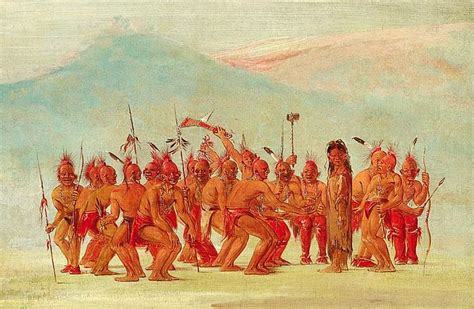
LGBTQ America: A Theme Study of Lesbian, Gay, Bisexual, Transgender and Queer History—chapter 09. Sexual and Gender Diversity in Native America and the Pacific Islands by Will Roscoe. part 2
Two Spirits in Native Tradition: Roles, Genders, Identities and Diversity cont.
In the twentieth century, ‘berdache’ “became the standard anthropological term for alternative gender roles among Native Americans. By the 1980’s, however, there was call for a change among scholars. In 1990, at a gathering of Native American and First Nations people, the term ‘two-spirit(ed)’ was coined. “Today, the term is used to refer to “both male-bodied and female-bodied native people who mix, cross, or combine the standard roles of men and women” (09-5).
The author acknowledges in a footnote that the term has its limitations (translation errors, and the fact that many tribes believe that all of us have the essence/spirit of male and female in us). But none of his reasons for these limitations match with my main critique both with the term two-spirit but mostly with the way it is often spoken of. Even within the acknowledgement of individuals who do not conform 100% to the Western concept of man or woman, the people are still fit into a binary. They are referred to as ‘male bodied’ and ‘female bodied’ two-spirited people.
To me, this often feels like an easy way for people to ‘short cut’ their understanding of native genders—as soon as they understand the way someone is sexed, they can still fit that person into a category, even if those categories are imperfect. Intersexuality is a ghost when topics of sex and gender arise. More and more, we understand that sex is not immutable, it is yet another social construction—the process of someone developing in utero and then continuing to grow and change in their lifetime is so complex that very often people do not fit neatly into either the distinct category of male or female.
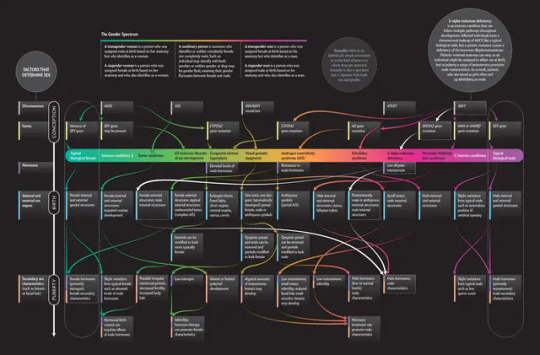
(See the link below for a better image of this)
Whether that is their very chromosomes, hormones, secondary or primary sex characteristics—all these things and more combine to create a person. A person whose very sex is unique to them, as their gender is unique to them. Who knows the true reality of the two-spirit’s biological sex? No one—unless they are given extensive expensive testing that has only recently become available.
The truth is that intersexuality is natural and is common in humans, even in the Western world with its biopolitical control and its dualisms. The reason two-spirit people were and are held so special is because they do not fit neatly into these categories. To me it feels a kind of modern colonial erasure to try and sex the bodies of people who often very clearly and blatantly blurred all barriers. It feels as if it misses the entire point of the term two-spirit, as least as I understand it. But, I have not read much into what other two-spirits (especially elders) think about this concept. “Two-spirit males have been documented in at least 155 tribes; in about a third of these a recognized status for females who adopted a masculine lifestyle existed as well”. (09-6) But as Roscue later adds, “absence of evidence cannot be taken as evidence of absence” (09-8).
In general, the lives of “native women have been overlooked […] and obscured by Euro-American sexual and racial stereotypes. Taking a broader view reveals that women throughout North American and the Pacific Islands often engaged in male pursuits, from hunting to warfare and tribal leadership, without necessarily acquiring a different gender identity” (09-8). Roscoe then offers some examples of Indigenous women being awesome. The author then lists examples of traditional terms for two-spirited people across various tribes and explains that many of them cannot be literally translated into gender binary terms like ‘man-woman’. “These terms have lead anthropologists, historians, and archaeologists to describe two-spirit roles as alternative or multiple genders” (09-6). In fact, “many native societies are capable of accommodating three, four, and possibly more genders, or having a gender system characterized by fluidity, transformation, and individual variation” (09-7).
The author discusses how two-spirit children were identified often as youth by the certain type of activities they liked to participate in. Oftentimes ceremonies ‘marked’ people with two-spirit status. He then goes on to discuss the other ways two-spirits lived in society. “In many instances, male and female two spirits were medicine people, healers, shamans, and ceremonial leaders” (09-8). Certain ceremonial functions were specific to two-spirits and they were often seen to hold great power (09-8). “Because two-spirits occupied a distinct gender status, their relationships were not viewed as being same-sex” (09-9). !!!! This feels so important for some reason!!
Sexual and Gender Diversity in Native Hawai’i
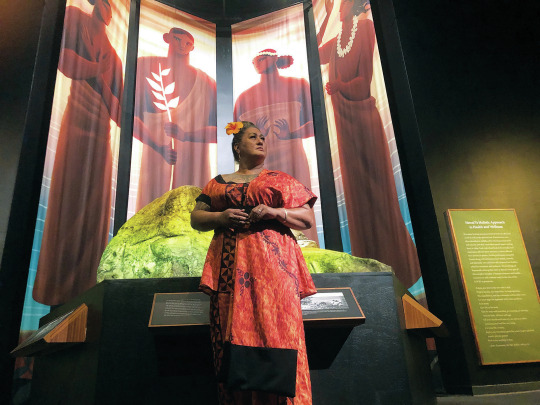
This section further emphases that indigenous peoples have had genders that go beyond male or female, man or woman and also that colonial violence is a tragedy. While I respect and love the people of Hawai’i and their struggles are so, so similar to Native Americans, I believe that the vast majority of Native Hawaiians do NOT consider themselves Native American (or American Indian or even just American) so my covering on this topic will be limited.
Roscoe speaks about the mahu stones that have extraordinarily sacred significance—these stones have a powerful history and connection to the mahu people (their gender diverse term). (This summary is literally so terrible and not at all a true representative of how important and beautiful this topic is, I apologize). Like the people, the stones faced colonization and were figuratively and then literally buried—“in the 1920s they were buried beneath a bowling alley” (09-15). They have since been reclaimed and are now being properly respected but, for the native peoples, “the Land inheres as sacred—beyond human perception and conception, beyond our capacities for belief and imagination—in and of itself” (09-15) and “If there were no humans on earth, they would still be sacred” (09-15). The stone’s spiritual power ‘has never been interrupted’ (09-15).
#queer theory#queer history#two spirit#two spirited#mahu#indigenous cultures#indigenous people#queer ecofeminism#queer politics#biology#intersex#queer ecology#ecofeminism#heteronormativity#colonialism#history#erotophobia#critical ecology#environmental politics#american history#indigenous history#human history
46 notes
·
View notes